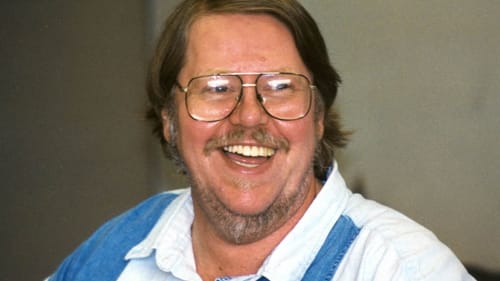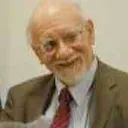Stay in the Loop
BSR publishes on a weekly schedule, with an email newsletter every Wednesday and Thursday morning. There’s no paywall, and subscribing is always free.
Science fiction with a touch of Philadelphia
Barnes & Noble celebrates science fiction, honoring Philly ‘Asimov’s’ editor Gardner Dozois

Asimov’s Science Fiction magazine has had a Philadelphia link ever since its first issue appeared on the stands in 1977. Its first editor, George Scithers, was a retired army officer who came to Philadelphia to work on a transportation project. He stayed in the city and edited the magazine from his home in University City. Asimov’s third editor, Gardner Dozois, worked from his apartment in Center City during the 19 years he edited it.
Gardner died all too soon, at 70, last year. The March-April 2019 issue of Asimov’s is a tribute to him, featuring a reprint of one of his own stories, personal tributes from 13 writers, and stories by writers who worked with him over the years. Two of the stories in the issue were written by Philadelphia writers, Michael Swanwick and me, Tom Purdom.
The Philadelphia connections
Barnes & Noble is recognizing this Philadelphia connection by hosting a special author event in its Rittenhouse Square store on Saturday, March 30. The participants will include the editor of Asimov’s, Sheila Williams; Michael and me; and a visitor from the music world: mezzo-soprano Suzanne DuPlantis, co-director of the Lyric Fest song series.
It wasn’t planned that way, but Michael and I both wrote stories with Philadelphia connections around the time our editor, Sheila, started putting the tribute issue together. My story looks at the future of the Mummers Parade in a globally prosperous tomorrow. Michael’s is a literary tour de force—eighteen vignettes that he wrote while he was attending a Lyric Fest concert devoted to Debussy’s songs.
Michael and his wife came to the concert with me and he wrote each story while the song was being sung. He likes to do things like that.
It’s alive!
Magazines have played a major role in the development of the modern science-fiction genre. Science fiction became its own genre in the 1920s, when pulp magazine publishers started producing specialized science-fiction magazines, in the same way they produced magazines that specialized in mysteries and westerns. Many writers had written science fiction in the 19th century, in addition to Jules Verne and H.G. Wells, but science fiction went through an intense evolution in the pulps, with specialized writers creating stories for a specialized audience. It emerged from the pulp period in the 1950s with a new range of subjects and new techniques for writing stories that plunged the reader into unfamiliar, radically alien futures.
Asimov’s is the youngest entry in a group of fiction magazines. When its publisher decided to add a science fiction title in 1977, many people thought science-fiction magazines were dying. Science fiction was following the same arc that mystery followed—beginning as a short story form in the 19th century, until publishers and writers discovered novels were more lucrative.
Novelists dominate the contemporary science fiction scene, but the magazine pessimists turned out to be wrong. Asimov’s has lasted more than 40 years and the genre still supports two other print magazines and several online publications. The science-fiction section at the Rittenhouse Square Barnes & Noble always contains up to 15 short fiction anthologies. The mystery section may contain one.

The magazines have survived because the shorter literary forms suit the genre. Many people feel the ideal forms for science fiction are the novelette and the novella—stories of 10-45,000 words. (Novels usually run about 100,000 to 130,000 words.) Science-fiction writers need more space than the standard short story, because they have to develop complicated, unfamiliar backgrounds. But they may not need the wordage of a full-length novel.
Remembering Gardner
Gardner built a major career as a writer and editor around shorter literary forms. He wrote two novels, but his reputation as a writer mostly rested on his sensitive, unpredictable short stories and novellas. He enjoyed a long career as an anthologist and continued to edit anthologies after he left Asimov’s in 2004. He edited 35 editions of a huge annual best-of-the-year anthology that became an institution in the field.
The big awards in the science-fiction world are the Hugos, presented by the annual World Science Fiction Convention; and the Nebulas, presented by the Science Fiction and Fantasy Writers of America. Gardner had a small table packed with Hugos and Nebulas he had earned as a writer, magazine editor, and anthologist. He had started writing short stories again and we were all looking forward to seeing more of his work.
A distinctive culture
This will be the second time the Rittenhouse Barnes & Noble has presented an Asimov’s author event. The first time, in 2015, the coinciding issue of Asimov’s contained stories by four Philadelphia writers. I can’t speak for myself, but the other members of the panel all turned in performances that produced one of the most enjoyable literary events I’ve attended.
Science-fiction writers tend to be interesting, entertaining speakers. Science-fiction fans organize annual conventions in most US cities, and writers hone their speaking skills giving speeches and participating in panels. Science fiction has generated its own distinctive subculture. One of the byproducts of that culture is a group of writers who look at technology and human society from offbeat, highly personal angles.
What, When, Where
Barnes & Noble will host an Asimov’s magazine author event at 4pm on Saturday, March 30, at the Rittenhouse store at 18th and Walnut Streets, Philadelphia. The event is free and open to the public. For more information, call the store at 215-665-0716.
Sign up for our newsletter
All of the week's new articles, all in one place. Sign up for the free weekly BSR newsletters, and don't miss a conversation.

 Tom Purdom
Tom Purdom